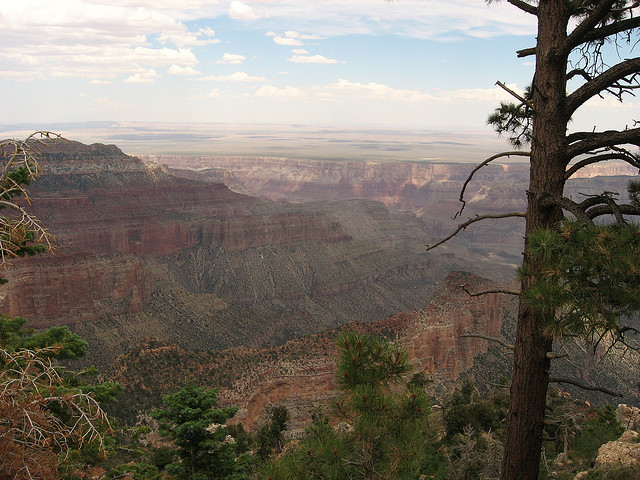
WASHINGTON – The National Park Service and the Van Alen Institute invite colleges of architecture, landscape architecture and related disciplines to participate in a design competition to look at the visitor experience of the future. “The iconic national park visitor centers born in the 1950s and envisioned as the park gateway may not serve that purpose for today’s visitors,” said National Park Service Director Jonathan B. Jarvis.
“Many people – and not just those under 30 – plan their visits online, downloading information to iPhones, iPads, or Droids,” Jarvis said. “There is no question that people should be able to talk to a real park ranger but is the visitor center in its current form the best way to achieve this? My hope is that the competitors will closely examine national parks, even the very concept of the visitor center.”
As the competition begins this fall, multidisciplinary teams from universities across the nation will propose models for the design, management, and operation of one of seven national parks. The proposals will be based on faculty and student research that focuses on the park’s unique character, issues and challenges. The National Park Service, in collaboration with the Van Alen Institute, selected different types of parks and visitor experiences for faculty/student teams to explore:
- Hopewell Furnace National Historic Site, Pennsylvania
- Civil War Defenses of Washington, D.C.
- Biscayne National Park, Florida
- Chattahoochee River National Recreation Area, Georgia
- Nicodemus National Historic Site, Kansas
- Valles Caldera National Preserve, New Mexico
- San Juan Island Historical Park, Washington
A national design advisory committee has defined the overarching design challenge and specific issues to be addressed at each park. Each team’s proposal may address specific park projects, but may also investigate design and planning solutions that consider the way a modern visitor of any age, ethnicity, and ability relates to any national park and its story.
In December, seven student and faculty teams will be selected to continue development of their proposals. Winners will be announced next summer and their work exhibited online. A select number of students will be eligible to apply for paid summer internships with the National Park Service in 2012 and 2013.
The competition will test and refine six principles that future park planning and design must demonstrate: a reverence for place, engagement of all people, expansion beyond traditional boundaries, sustainability, informed decision-making, and an integrated research, planning, design, and review process.
These principles were drafted during the 2008 Designing the Parks conference sponsored by the National Park Service, the Van Alen Institute, the University of Virginia, the National Parks Conservation Association, the Cultural Landscape Foundation, and the Golden Gate National Parks Conservancy. The conference marked the start of a public-private partnership to promote the importance of well-designed public parks in contemporary society.
Olympia Kazi, Executive Director of the Van Alen Institute said, “The competition offers an exciting opportunity for student and faculty teams across the nation to help build a common foundation of design principles for 21st century planning and design of America’s national parks – cherished and protected places that represent our country’s most significant landscapes, natural systems, historic events, and cultural heritage.”
The competition guidelines are available at http://www.vanalen.org

 Your Privacy Choices
Your Privacy Choices
 The
The